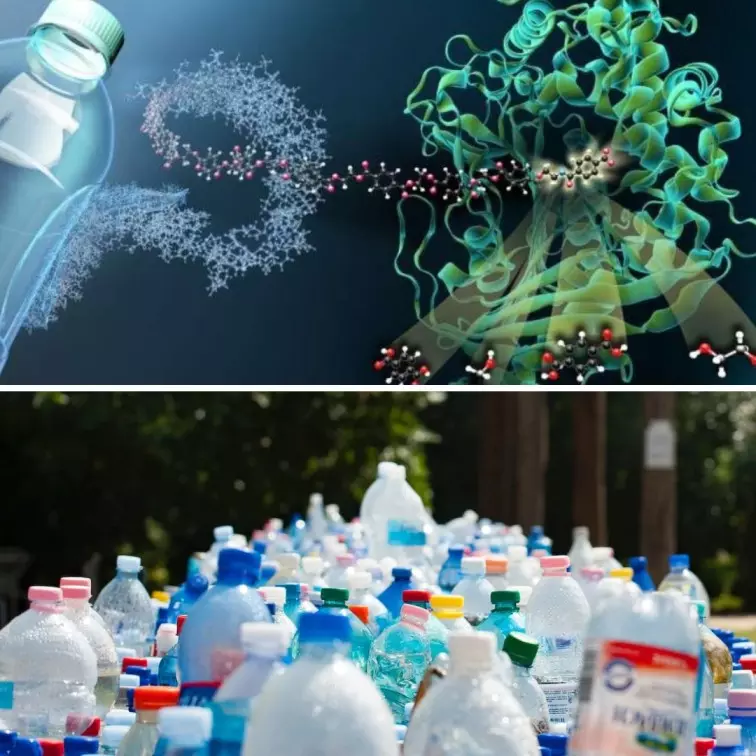Breakthrough Innovation! New Plastic-Eating Enzyme Breaks Down Trash To Its Basic Components
Writer: Navneet Nishant
I am a Media Student currently pursuing Master's in Mass Communication From Central University Of Jharkhand, I have done my previous internship In Jharkhand state livelihood promotion society as KMC intern.
Others/World, 8 Feb 2023 1:25 PM GMT
Editor : Jayali Wavhal |
She writes about gender issues, human interest, and environment.
Creatives : Jayali Wavhal
She writes about gender issues, human interest, and environment.
Over the past few years, several enzymes have been discovered that can degrade popular polymers like PET. However, scientists have recently found one that can disassemble one of the vital plastic building blocks left over after this procedure.
Today, the biggest environmental problem the world faces is plastic waste. According to the United Nations Environmental Programme (UNEP), the world produces almost 400 million tonnes yearly. There are more than 30 metric tonnes of plastic waste in the sea and over 109 metric tonnes in rivers.
Over the past few years, several enzymes have been discovered that can degrade popular polymers like PET. However, scientists have recently found one that can disassemble one of the vital plastic building blocks left over after this procedure.
How Do Enzymes Work?
The novel enzyme, initially reported by New Atlas, is based on a bacterium that made its first appearance in 2016 in Japan. There, it demonstrated an extraordinary appetite for PET and the ability to degrade it in a matter of weeks.
This was subsequently improved by the University of Portsmouth researchers, who named it PETase. Later, they updated it to another variety called MHETase to create a super enzyme that belches PET polymers six times faster.
The two chemical components of PET left when the enzyme finished with it—ethylene glycol and TPA—are both troublesome. Later, the scientists discovered an enzyme called TPADO that breaks down TPA and only TPA with previously unheard-of efficiency.
By observing them at the UK's Diamond Light Source Facility, which bombards them with intense X-ray beams, they could identify the novel enzyme. An ultra-high-resolution model of the enzyme that shows the individual atoms within it was withheld, demonstrating how TPADO actually obliterates TPA. This will serve as a model for scientists to create even more effective enzymes.
Towards Sustainable Environment
The engineering of enzymes to disassemble PET plastic into its constituent parts has made great strides in recent years, according to study author Professor John McGeehan, reported by Indiatimes.
"This study takes things further and examines the initial enzyme in a cascade that can break down those components into smaller compounds. Microorganisms can then use these to produce sustainable chemicals and materials, which is necessary to turn plastic waste into useful items, " stated Professor John McGeehan.
A discovery like this is beneficial for the world, and it has the potential to solve one of the most significant problems of the 21st century, i.e., plastic waste. Plastic has become an essential part of every individual, and its use can be minimised, but it can only be avoided entirely once something sustainable is discovered. So, for the time being, the discovery of an enzyme that can eat plastic is remarkable for the planet and will help grow the world into a sustainable environment.
Also Read: MNNIT To Create Glass Fibre Freight Wagons For Indian Railways, To Be Used For Transporting Salt
 All section
All section














